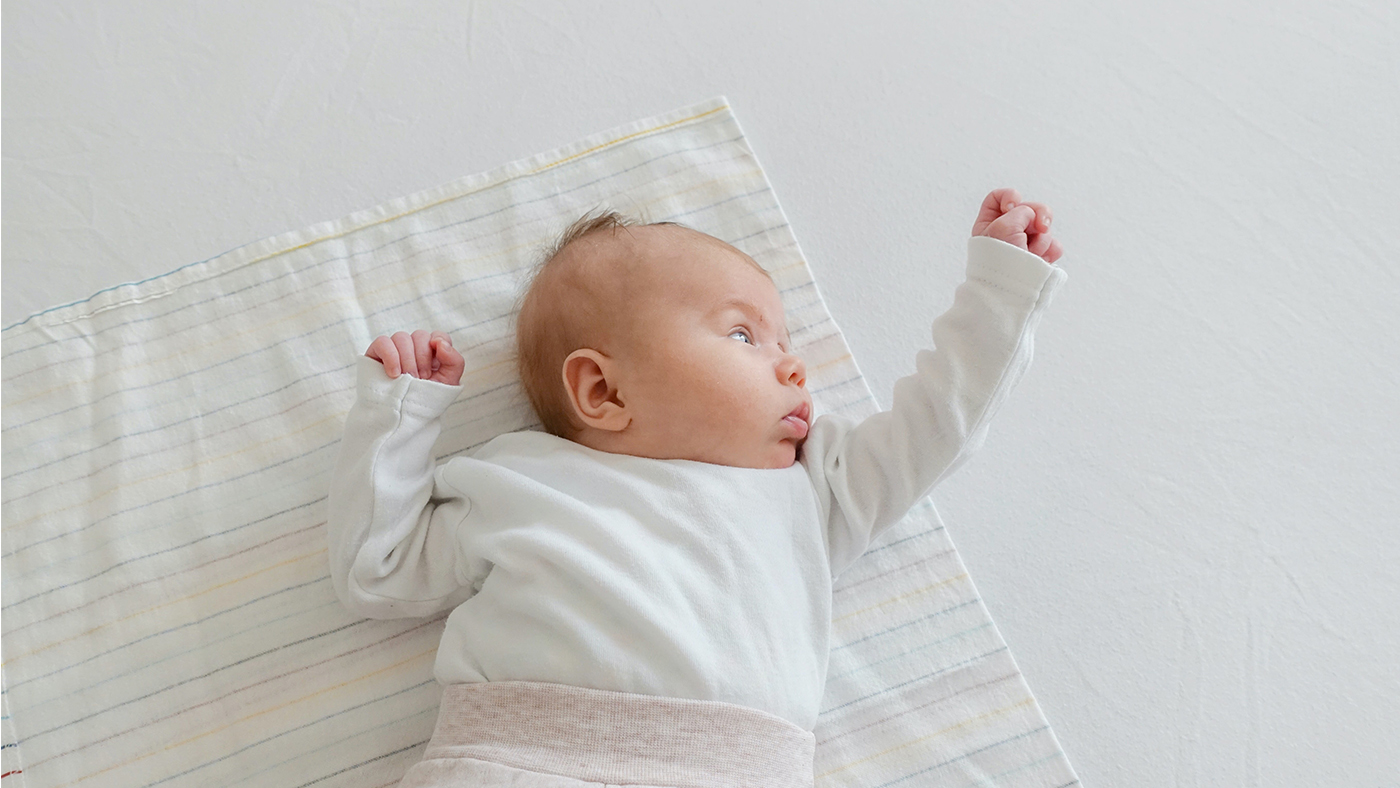A closer look at your baby's stretching movements

Your baby will have been moving for some time before birth, with their first movements linked to the activity of motor neurons, then movements caused by primitive reflexes in response to sensory stimulus.[1] You might have noticed a professional checking for some of these primitive reflexes shortly after birth, perhaps holding your baby upright in order to see stepping or walking reflexes. The first movements that you may see soon after your baby is born might be shaky movements of their chin, arms or legs, particularly when they cry.[2]
Early movement – from curled up to stretching out
At first, your baby might be comforted by being wrapped or swaddled, so you may only see movements of arms and legs during dressing or nappy changing. Your newborn baby does not have a sense of where their body begins and ends, but as they become more comfortable having their arms and legs free to move, they will stretch and kick and begin to feel the length of their body through these movements.
The first movements that you see will seem to lack control as your baby moves both sides of their body together in random jerky movements. Babies spend around 5 per cent of their time making these kinds of repetitive movements of their arms, hands, legs, body and tongue,[3] and these help to develop muscle tone, control and their sense of their body, as well as strengthening neural pathways linked to movement. Gradually, you will notice that your baby starts to look more opened out, as their legs, arms and hands move from looking curled into a foetal position to being straight or open more of the time.
Good moments to move and explore
You might find that your time with your new baby seems to be taken up with establishing feeding, working out when they want to sleep and what helps them to settle to sleep. But as you get to know each other and they become more comfortable in the world, think about times when they could have some time to stretch and move.
This might be during bathtime or when changing their nappy; they might move more when they don’t have a nappy on, or they might seem upset when uncovered as they adjust to the sensations in the world.
Find the right time for your baby to move their arms and legs and respond to their movements with smiles.
Moving will become a way of communicating with you
Soon, moving their legs and arms will become a means of communication as they respond to your presence with these movements.
Your baby develops control of their muscles from their head to their feet (cephalocaudal) and from the centre of their body to the extremities (proximodistal), so control of large muscles will come before control of small muscles in their hands and feet.
In the next few months, your baby’s movements will become more controlled and purposeful, moving from these early jerky actions to smooth and purposeful movements of the arms and legs; and then to moving each side of their body separately, for example, to reach with one hand or move one leg forwards at a time to crawl.
References:
[1]. Goddard-Blythe, S. (2004). The Well Balanced Child: Movement and Early Learning. Stroud: Hawthorn Press.
[2]. Stanford Children’s Health (undated) Basics about your newborn baby’s body. [Online] Basics About Your Newborn Baby's Body (stanfordchildrens.org) (Accessed on 22nd September 2021).
[3]. Sheridan, M., Sharma, A and Cockerill, H. (2014). Mary Sheridan’s from birth to five years. Children’s developmental progress. (4th edn.). Abingdon: Routledge.